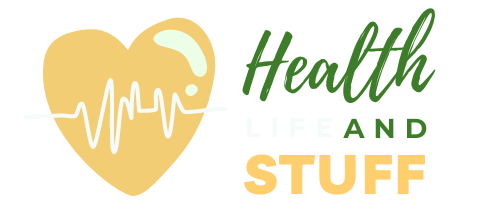This is a full list of medications that are currently used for treating ADHD. There isn’t much like this online, so hope it helps.
It’s written in plain English with (we hope!) a sense of humor. At the end, we go over some common questions.
If it helps you, we’d really appreciate your helping getting the word out by sharing this page’s link with someone.
For those who are concerned, they might have ADHD, see an ADHD Test Made for Adults.
Note: Focalin and Concerta and several other medications are not given an entry of their own.
Full ADHD Medication List
#1 Ritalin
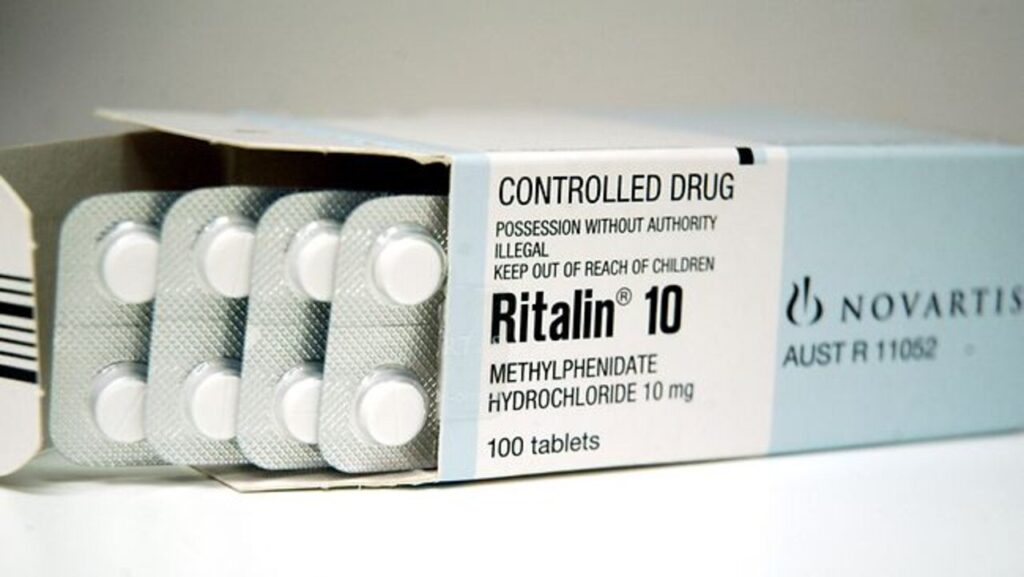
Extremely popular – almost a synonym for ADHD – Ritalin has been a star since it was made in the 1940s and named after a chemist’s love, “Rita.”
Ritalin’s technical name is methylphenidate. Methylphenidate is the main ingredient not just in Ritalin, but in Concerta, and other newer drugs, like Purdue Pharma’s Adhansia XR.
Ritalin acts on dopamine and norepinephrine, to block reuptake from the space in between cells. This increases the amount of time they stay there, which means that they activate signaling pathways for longer periods of time.
And that means greater focus, motivation and attention.
With therapy, up to 70% of people with ADHD experience significant benefit from Ritalin. The effects can be amazing, allowing normal living for some – to repeat, it is a powerful medication that can make normal living possible for some people.
One of the biggest downsides to instant release Ritalin – and all the stimulants – is that the benefits only last a matter of hours, from 3-6. This can mean you have to take several doses a day, which can be inconvenient.
That said, there are longer release forms which provide symptom relief for much longer periods of times, as long as 12 hours or such.
While the most effective treatment for ADHD, stimulants like Ritalin can have their fair share of side effects, however, including anxiety, weight loss, and potentially even psychiatric issues like triggering mania or psychosis. Additionally, they can cause heart problems in at risk people.
Because Ritalin has a high potential for addiction and abuse, it has the highest restriction possible while still being widely used – it’s a Schedule II drug.
Pros: With Adderall, Vyvanse and so on, the most effective chemical treatment for ADHD
Cons: Potentially serious side effects, schedule II, figuring out dose schedule can be a pain
Variants: Concerta, Focalin, Metadate, Daytrana
#2) Adderall

Adderall has become extremely popular for treating ADHD since its introduction in 1996. It is a mix of several amphetamine salts and like Ritalin is a highly effective treatment.
Some studies have shown that Adderall may be slightly more effective than Ritalin at treating some of the ADHD symptoms. This advantage is not established, but probably has to do with a slightly different mechanism of action. One dose of instant release Adderall, however, may last as long as two doses of instant release Ritalin.
Adderall may also have a slightly different side effect profile than Ritalin.
In terms of chemical action – Adderall not only blocks the reuptake of dopamine and norepinephrine through cellular pumps, it also goes inside the cells and reverses the pumps. So instead of letting those chemicals in, and taking them away from “outside” the cells, it kicks them out.
Reversing the pumps may lead to the build up of free radicals, but no major study has analyzed whether this happens or has a clinical impact.
Adderall has the same downsides as Ritalin, and is also schedule II.
Pros: Among most effective treatment for ADHD
Cons: Potentially serious side effects, schedule II, dosing can be a pain
Variants: Adderall XR
#3) Vyvanse

Vyvanse is a miracle of advertising and repackaging. Fundamentally, it’s nothing more than Dexedrine, which has been around for a long time and developed a bad reputation due to its over-use as a diet pill.
That said, there is something quite good about Vyvanse/Dexedrine – it’s made only from the d-type of amphetamine with none of the the l-type. This is important because it’s quite possible that the d-type is more effective and/or has less of the side effects of the l-type.
Adderall, by contrast, is a mixture of d and l-amphetamines, which means that it more may have more of a kick as well as more or different side effects. This mix may mean that Adderall may provide more of a “punch” so to speak.
That said, Vyvanse has its fair share of side effects, and none of the stimulants are entirely safe drugs.
The good things about Vyvanse include its quite long lasting effect, possibly up to 12 hours, and its somewhat less susceptibility to abuse. It is as effective as Adderall and Ritalin for treating ADHD.
Pros: Among most effective treatment for ADHD
Cons: Potentially serious side effects, schedule II, dosing can be a pain
#4) Intuniv
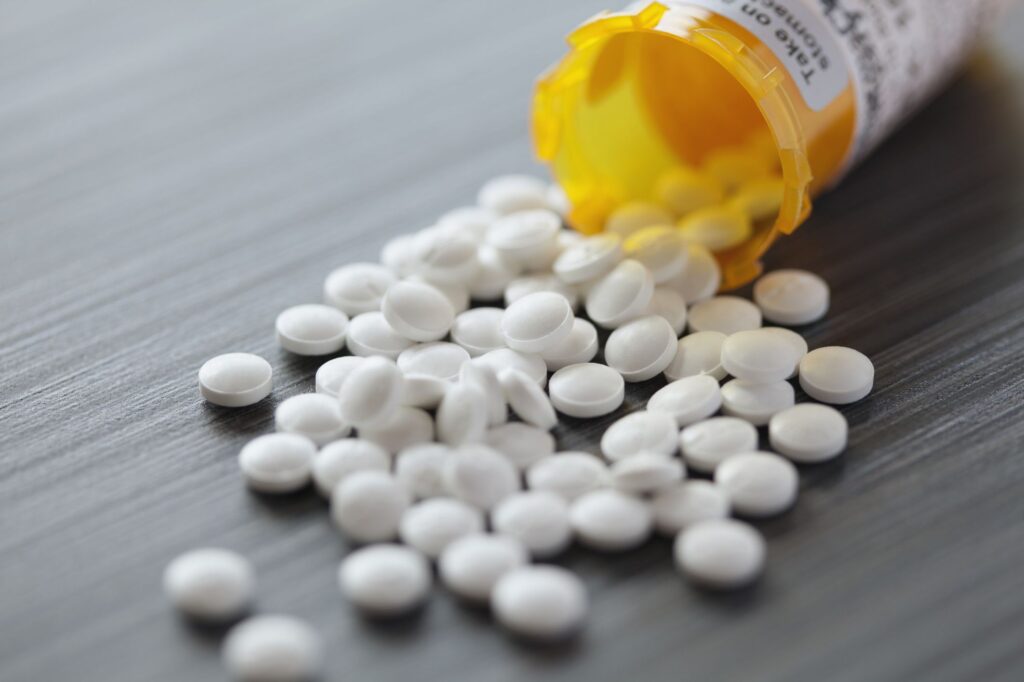
Intuniv is a treatment that was initially used for lowering blood pressure and has recently become more fashionable for treating ADHD, a use for which it was recently approved. Intuniv is pretty much the opposite of the stimulants, which raise blood pressure and stimulate the body.
If it does the opposite of traditional treatment, why might it work? The key is that Intuniv acts as an alpha-2 agonist. While activation of these receptors lowers blood pressure, it may also serve to activate certain areas of the brain, especially the prefrontal cortex, meaning better focus and attention.
Intuniv is like a stronger Strattera, but hopefully avoids the problems of the stimulants, and may even be useful in combination with them. There are problems, of course. As this blog has noted, some of the trials which led to its approval had a shockingly high rate of people fainting – something like 5/262 participants fainted.
That is not a good side effect. Additionally, treatment with Intuniv just falls short of sending ADHD into “remission.”
Other issues possibly include depression and blood pressure problems.
Pros: Non-stimulant, may be moderately effective
Cons: Possibly serious side effects like fainting, less effective than stimulants. Very new and untested.
Variants: Clonidine, Guanfacine, Intuniv
#5) Strattera
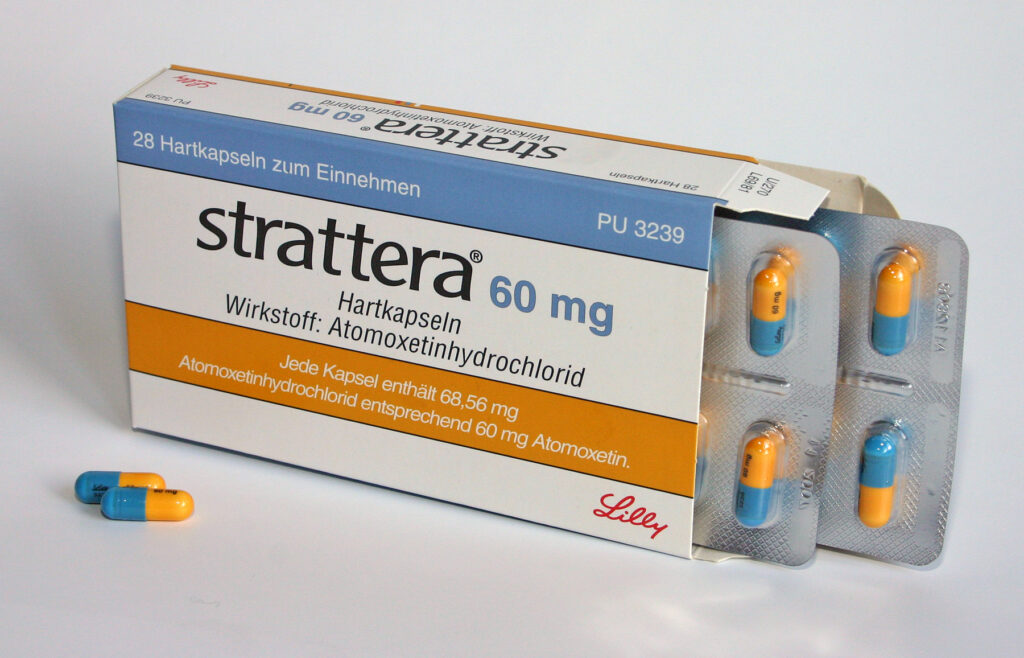
Strattera used to be “the only non-stimulant treatment approved for ADHD” until Intuniv came onto the market in 2009.
Like Ritalin, Strattera also works on the norepinephrine chemical and prevents its removal from the space in between cells. Despite a similar mechanism of action, it does not have work immediately, however. It can take up to 8 weeks for Strattera to show its full benefit.
Strattera is supposed to provide all day coverage taken just once, but one study showed that taking a dose in the morning and at night provides the best release. This is still a significant advantage over the stimulants.
The history of Strattera is somewhat interesting – it was initially tested for use in depression, but didn’t seem to do much. Researchers thought that its effects on norepinephrine might have benefit in treating ADHD, and they were right.
Similar to the antidepressants, Strattera does increase your risk of becoming suicidal, which is why it has a black box warning.
The studies show that Strattera works, some say even as well as Ritalin. But those claims to efficacy seem somewhat overstated, with many people saying that Strattera is not so effective.
Strattera is worth a try when stimulants fail or are not a good idea (say you have serious anxiety or past psychosis), yet it also has some of their nasty side effects.
Pros: “Non”-stimulant, long term coverage
Cons: Suicidal ideation, may not be as effective, expensive, long time to take effect
#6) Provigil or Modafanil

There’s quite a buzz around Provigil, generic modafanil. It keeps enough of the amphetamine like behavior of Adderall to provide the kick needed to treat ADHD, while having a host of other chemical behaviors that, some argue, may make it less addictive and less risky.
Provigil, for instance, is only schedule IV, as opposed to the highest restriction placed on Ritalin and Adderall.
That said, we don’t know a lot about it. Provigil may play with the dopamine receptor like Ritalin – or it might not. It might just increase levels of dopamine by some other mechanism. This is important because the way it interacts with dopamine may determine its potential for addiction.
Other chemical behaviors of this drug? Hold your breath – it possibly has GABA, serotonin, adrenergic, histaminergic and glutamanergic effects. That’s like half of the neuro-transmitters currently in vogue, and some of them theoretically cancel each other out! (While there are hundreds of neurotransmitters, because of how little we know, we basically pretend there are only about 10. Hopefully, as we learn more, we will get even more effective treatments with fewer side effects.)
Provigil is used, in part, for sleep apnea, narcolepsy and has been proposed for schizophrenia, which is stunning, considering that traditional stimulants cause psychosis, not treat it.
As of now, however, Provigil is not approved for treating ADHD, although it seems to have decent efficacy in treating it. (Some studies have shown similar efficacy to Ritalin, one – from the manufacturer itself (!) – showed no efficacy, and so on). A major study trying to approve it for ADHD in children failed when a significant amount of children developed skin rashes.
So we don’t know how well it works. And Provigil is also extremely expensive, so playing around with it can rack up a bill.
Expect interesting things from this drug and its half-dozen chemical actions.
Pros: May be less addictive, may be as effective as stimulants, schedule IV
Cons: Expensive, new, not-approved for ADHD, not enough long-term use data
#7) Wellbutrin
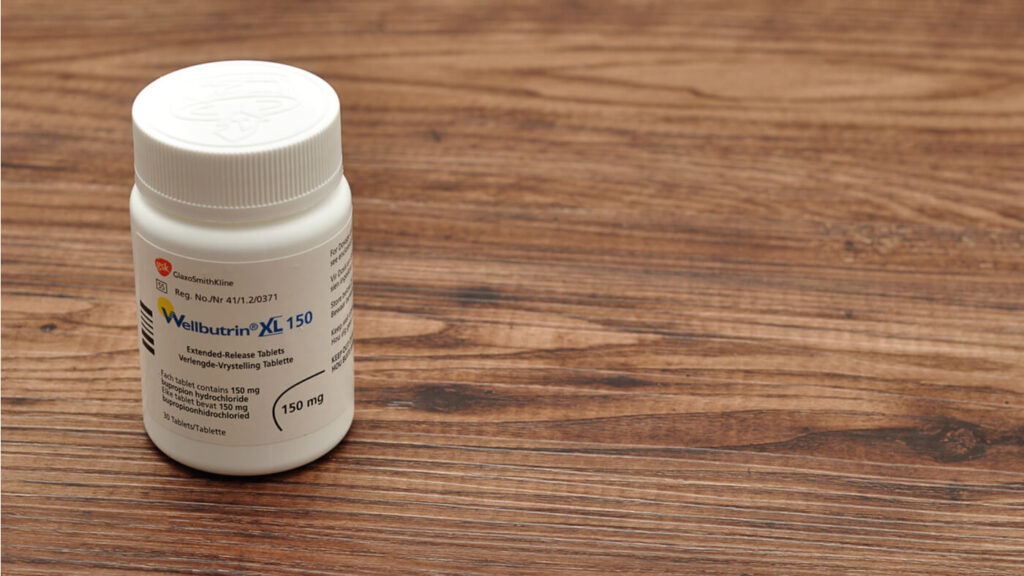
Wellbutrin is a strangely behaving antidepressant. It’s an alternative treatment for ADHD, although not approved for that use like Strattera, and has been shown to be better than placebo for treating ADHD.
That said, Wellbutrin has only a modest benefit for ADHD, with some studies showing that it works to some degree and others showing that it doesn’t really work that well.
What it does is act as an inhibitor of reuptake of norepinephrine and dopamine – to some degree. It also mimics them somewhat, which is interesting. Chemically, Wellbutrin is eventually converted by the body into some form of amphetamine, which might explain why it has some impact for ADHD.
So it isn’t the best treatment for ADHD, but it is used not-rarely.
Side effects can include extreme anxiety. We’re talking potentially about really bad anxiety. That said, in addition to making you less depressed, Wellbutrin might just help you stop smoking – which is another of its uses.
Pros: Moderately effective, full day coverage
Cons: Extreme anxiety, not as effective as stimulants, turns into amphetamines eventually – so may have similar problems
#8) The Tricyclic Antidepressants (TCA)
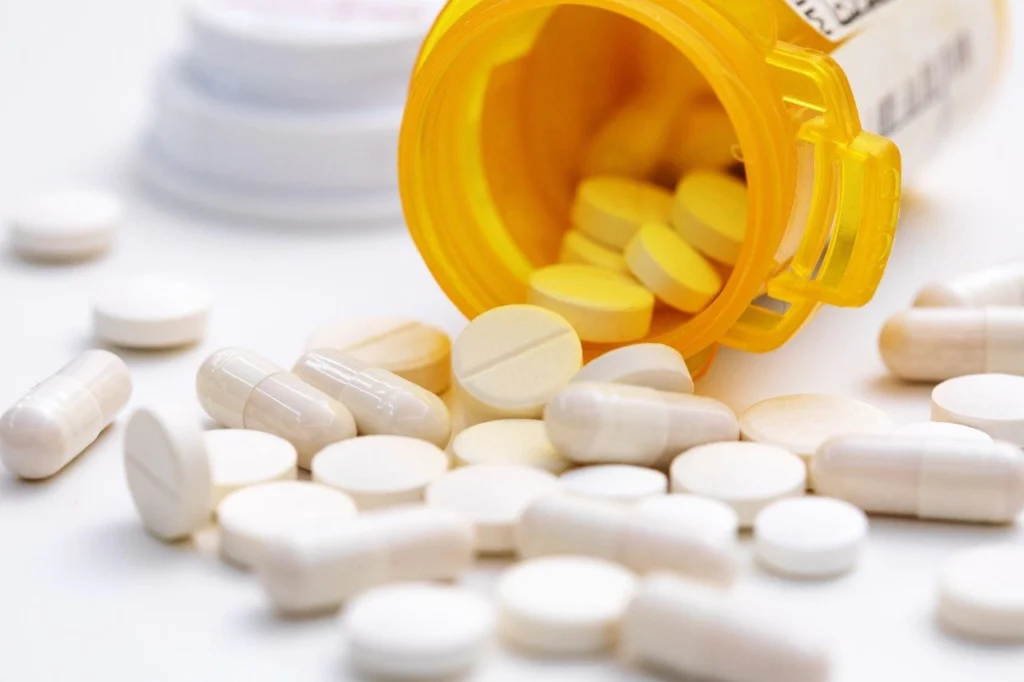
The tricylcic class of antidepressants has been shown to have significant benefit in treating ADHD, although not as strong as the stimulants. They are not so often used because of their serious potential for cardiac toxicity among other side effects.
The TCA’s benefit for ADHD is separate from their potential antidepressant effect. This is highlighted by the fact that reduction of some ADHD symptoms, especially behavioral, may start occurring in less than a week, as opposed to the 3-4 weeks it takes for the antidepressant effect.
(It’s an important distinction to make because you could feel like the King of Morroco but still have significant ADHD symptoms.)
They are many drugs in the TCA class. Of them, desipramine may be the best for ADHD, then imipramine.
That said, it is possible that other issues like antagonistic behavior may emerge with treatment, meaning that you exchange one set of symptoms for another. On the other hand, treatment with TCAs may provide almost full-time coverage. You don’t need to take 5 doses a day, for instance, as may happen with some forms of Ritalin.
Note that newer antidepressants, especially the selective serotonin reuptake inihibitors like Prozac and Zoloft have not shown similar efficacy or benefits in treating ADHD. This may be due to their more specific behavior, and lack of effect on norepinephrine.
Pros: Modest efficacy, long term coverage
Cons: Heart toxicity, overdose possibility, possible new symptoms, not as effective as stimulants
#9) Risperdal
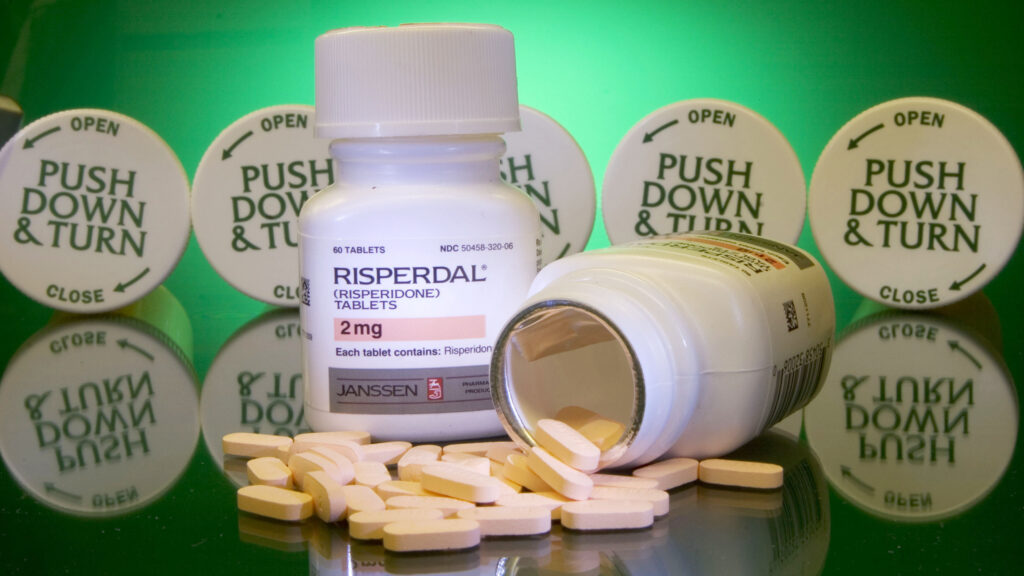
Risdperdal is a very popular tranquilizing antipsychotic. It blocks dopamine receptors in the brain, reducing the activity of dopamine. Careful readers may wonder if that is its chemical action, then how can it treat ADHD?
The answer is most likely because Rispderal and its family of medications, the antipsychotics, are tranquilizing and can induce a sense of calm. This can be useful at night in addition to standard treatment to help fall asleep.
Use of antipsychotics as sole treatment for ADHD, however, is not a standard medical choice. It does, however, happen, which is unfortunate. Remember, Risperdal has been approved for treatment of agitation and aggression in autistic kids. Its sedative effects may make it attractive for treating kids who have ADHD and are a handful.
The risks are significant. Long term use of Risperdal may lead to permanent movement disorders, extreme weight gain, and diabetes. And long term use of antipsychotics may make concentration and attention problems worse.
Pros: Sedating, may help fall asleep, may help gain weight
Cons: Long term side effects. Is pretty much the exact opposite of traditional ADHD treatment
Variants: Any anti-psychotic class tranquilizer
#10) Exercise

Exercise is extremely helpful for people who have ADHD. Within healthy moderation, it has no side effects – though people taking stimulants should be careful – and can honestly be said to be nature’s treatment for ADHD. It relaxes the mind and body, increases concentration, and improves mood.
One kid used to be a handle in school, but when his teachers agreed to let him run around the schoolyard when he got restless, did OK. That kid? Winston Churchill, one of the greatest British leaders ever.
Exercise won’t provide complete relief from ADHD symptoms and it is not a substitute for medication. But for people who have ADHD, it can make life that much better.
Other Drugs of Interest: Pemoline or Cylert – a schedule IV drug with moderate ADHD efficacy. Withdrawn in US from market due to toxicity to liver. Desoxyn – basically methamphetamine, not used often because it is essentialy the same as the street drug “meth,” which has very bad associations
#11) Adhansia XR
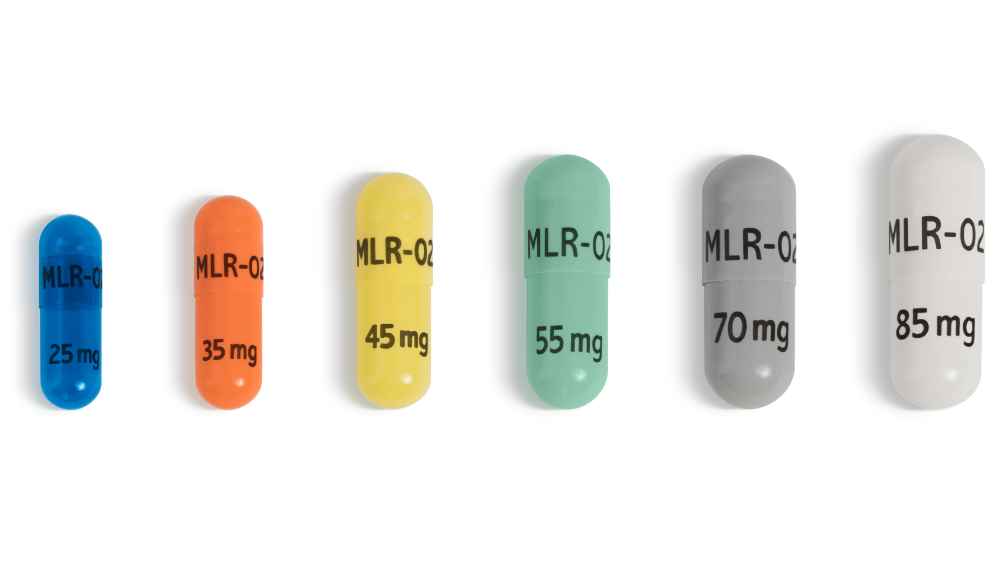
The methyplenidate hydrochloride-based drug, manufactured by the notorious drugmaker Purdue Pharma, was recently approved by the FDA in March ’19 to treat ADHD in patients as young as 6 years old.
Choosing Between Ritalin, Adderall and Others
One of the most common questions people have about ADHD treatment is, What’s better? Ritalin or Adderall?
The answer? There is no clear advantage any one class of treatment has over the other. Dr. Tuckman, a clinician who has treated hundreds if not thousands of patients and is Vice President of the world ADD Association has this to say:
Roughly 1/3 of people with ADHD will respond best to an amphetamine-type medication like Adderall or Vyvanse, roughly 1/3 will respond best to a Ritalin type medication like Ritalin and Focalin, and roughly 1/3 will respond equally well to both.
Dr. Tuckman also emphasizes how important it is to have patience. He says that is actually quite lucky to get the right dose on the first try and that often you just have to try several doses out until you hit get it right.
Instant Release or Extended Release?
Most ADHD medications come in the instant release or extended-release form. An instant release pill will typically last 3-5 hours, while an extended release typically lasts 8-12 hours.
It is our increasingly strong opinion that extended-release medications may have superior results than instant release. This is due to smoother drug release and less need to take medication. You wake up and take a pill and don’t have to take another one at work or at school.
Instead of having spikes of drug level, there is a smooth, continuous-release over the course of the day.
Some studies have shown that a significantly higher amount of people will respond to extended release treatment than to instant release. Also, some studies have shown that people prefer extended release treatment to instant release.
And in theory, extended-release formulations may reduce the risk for tolerance.
That said, 8-12 hours of activity does not cover the whole day. Some clinicians will prescribe an instant release to be taken at night to provide coverage for the whole day. The risk, however, is that this might cause insomnia.
On the effects of a proper dose
At the right dose, an ADHD medication should have minimal impact on how you feel. It changes how you experience things, how you perform, but shouldn’t change who you are or make you feel weird. The right dose is often very subtle in its effects.
The following is not uncommon – that someone is on an ADHD medication, feels it isn’t doing anything, but when other people are asked, they see a major change.
As such, the best person to judge if a medication is working is someone who spends a lot of time with you and doesn’t have ADHD him or herself.
Because the person taking the medication might not feel it at the right dose – finding the right dose can be a bit tricky. Doctors have different approaches, but the one that feels safest is to start at the lowest and carefully work the way up from there.
